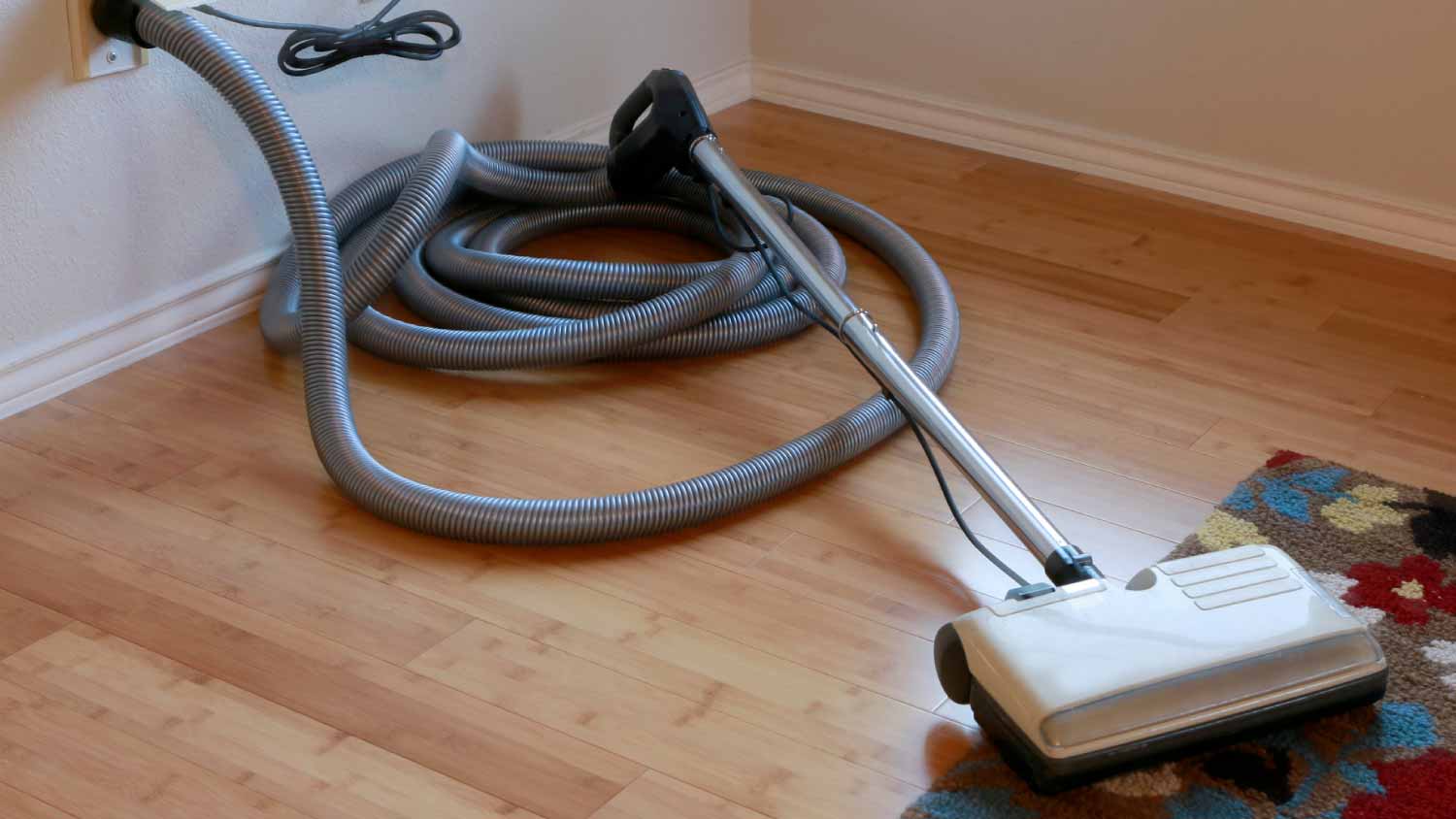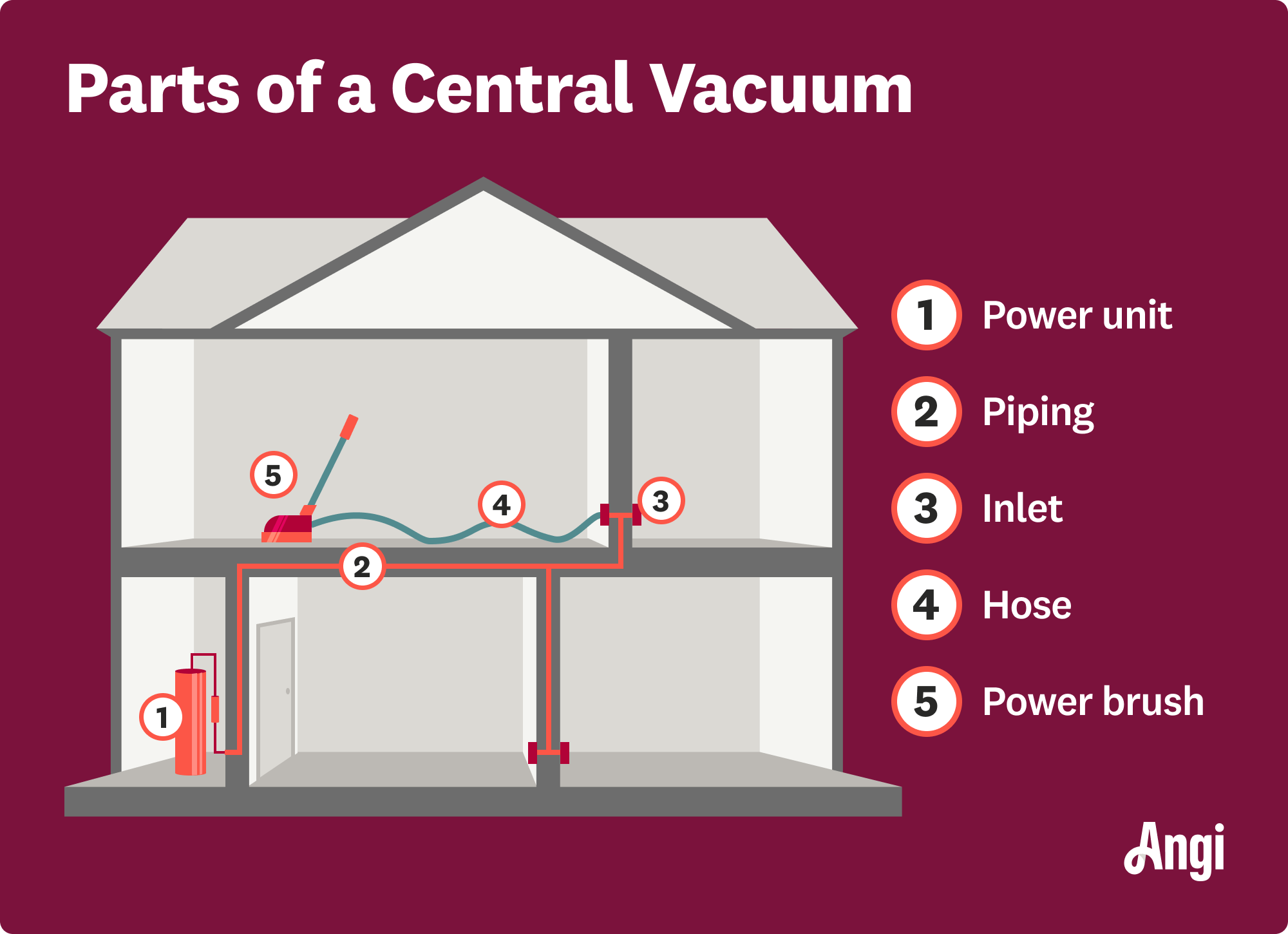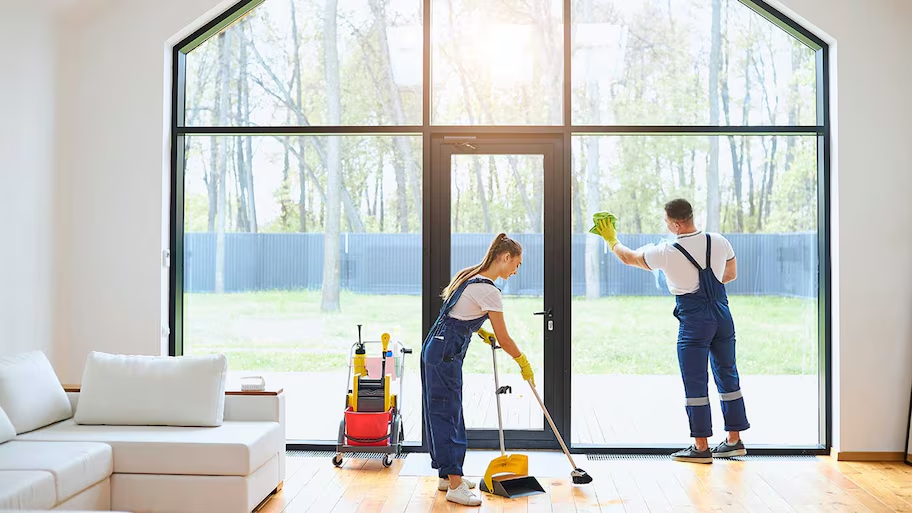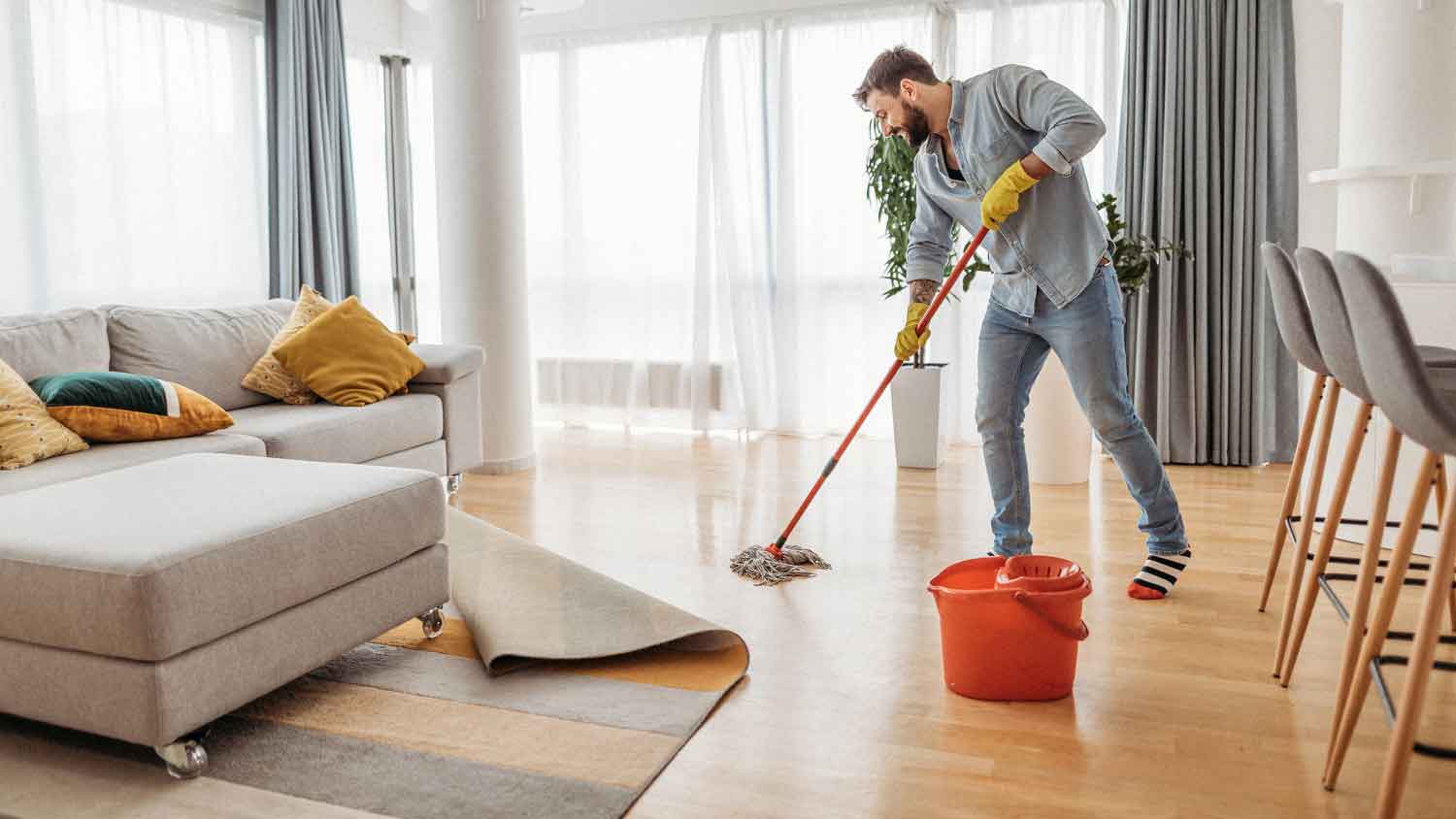Central Vacuum Maintenance: 4 Essential Tasks and How to Prevent Issues
Forget about lugging that heavy vacuum around


A central vacuum system is a built-in home feature that offers quieter operation, superior cleaning, and improved air quality without the hassle of lugging around a traditional vacuum. However, like any part of your home, routine central vacuum maintenance is essential to keep the system running smoothly and avoid costly repairs. Follow these tips to care for your central vacuum, ensuring it keeps your abode clean for years.
How to Know If Your Central Vacuum Needs Maintenance
You can usually tell when your central vacuum system needs attention. Signs include:
Decreased suction power
Ddd noises
Dust leaking from the unit
Additionally, bad odors and overheating are significant indicators that need to be addressed immediately. For serious issues, call your local central vacuum pro.
How to Maintain Your Central Vacuum System

Clogged or dirty vacuum parts are common problems with central vacuum systems. These can cause a wide range of issues, all of which can ultimately damage your system if not addressed.
1. Use Maintenance Cloths
Hair, dust, dirt, and small objects build up inside the vacuum’s tubing and ducts, causing blockages that reduce suction power. One of the most effective ways to clear things out is by using central vacuum maintenance cloths.
To do so, run a cleaning cloth through the system while the central vacuum is on. Just put the material at the mouth of the hose, and let the device suck it up. It will act like a sail that captures debris, pushing it down the ducts. Since these maintenance cloths have a cleaning solution coating, they will remove odors, too.
Repeat the process at each valve in your home to ensure the entire system is clean. Only use cloths designed for your central vacuum and follow the manufacturer's instructions.
2. Reverse Airflow
In more stubborn cases where maintenance cloths don’t work, try reversing the vacuum’s airflow by connecting the hose to the unit's exhaust port. This forces air through the system in the opposite direction to blow out any obstructions.
3. Clean or Replace Vacuum Bags and Filters
Stuffed vacuum bags or clogged filters are the most common reasons a central vacuum system loses cleaning power. When the bag becomes too full or the filter is blocked, airflow is restricted, reducing suction and preventing the vacuum from picking up debris efficiently. At worst, it can cause the system to overheat, resulting in significant damage.
To address this issue, first check the vacuum bag—most central vacuum systems have a visual indicator or clear canister to show when the bag is full. Go ahead and take a peek and replace it if needed.
Filters, on the other hand, can often be cleaned or replaced, depending on your system. Some models use washable filters, which you can rinse and let dry before reinserting, while others require filter replacements. Depending on use, checking bags and filters at least monthly is recommended.
4. Inspect Hoses and Attachments
Vacuum attachments can wear out or break over time. Regularly inspect them for cracks or damage and replace faulty parts to ensure optimal performance.
How to Prevent Central Vacuum Issues
Here are a few tips that will keep the system in excellent working condition:
Regularly clean your central vacuum's hoses and filters
Empty the dirt canister or vacuum bag to maintain suction power
Avoid vacuuming large debris, small objects, or liquids that could cause clogs
As with many things in your home, schedule periodic maintenance to inspect the motor and ensure proper ventilation. Remember, keeping the system clean and free from obstructions will extend your vacuum's life span.
How Do Central Vacuum Systems Work?

Central vacuum cleaning systems use hidden ductwork to suck away dust and debris into an extractor typically located in a basement or garage. Plug the vacuum hose into one of the wall inlets found throughout the house, and you are all set to go.
Since none of the dust collected vents into the home, which happens with traditional vacuums, the result is a much cleaner house and superior air quality.
How Much Does It Cost to Install a Central Vacuum?
On average, homeowners invest around $1,585 to install a central vacuum system. The typical range, however, falls between $1,100 and $2,195, with factors like home size, the number of rooms, location, and the system's power influencing the final cost.
DIY vs. Hiring a Pro
While homeowners can easily handle basic maintenance tasks, if a blockage persists or is deep within the system, contacting a professional or the manufacturer may be necessary to avoid damaging or burning out the system.
Additionally, strange noises, overheating, or a complete system failure may signal motor problems, which are also best handled by a pro.
Frequently Asked Questions
The disadvantages associated with central vacuums start with cost. They are expensive to install, especially in existing homes, as retrofitting requires opening walls. The system's bulky hoses can also be inconvenient to maneuver and store compared to portable vacuums. Additionally, repairs may need professional service, adding to maintenance costs. Lastly, while powerful, they may be overkill for smaller homes or apartments, making the investment less practical for some households.
The average life span of a central vacuum system is 20 to 30 years, depending on the system's quality, how often it is used, and how well it is maintained. With regular cleaning, proper maintenance, and timely replacements of components like filters and motor brushes, many systems can function effectively for decades.





- Is a Central Vacuum System Right for Your Home? Learn Pros, Cons, Cost, and More
- Get the Lowdown on Central Vacuum Systems: Are They Worth It?
- Who Should You Call to Install a Central Vacuum System?
- Why a Central Vacuum Is a Good Option to Eliminate Pet Hair
- Why Your Vacuum Won't Turn On: 9 Potential Reasons
- 4 Common Vacuum Cleaner Problems and How to Fix Them
- Why Is My Vacuum Not Suctioning? 10 Troubleshooting Tips
- 7 Tips for Vacuuming Your Stairs to Get Dust-Free Results
- How to Adjust Your Vacuum Carpet Height Settings for Maximum Results
- 8 Tips to Learn How to Vacuum the Right Way









